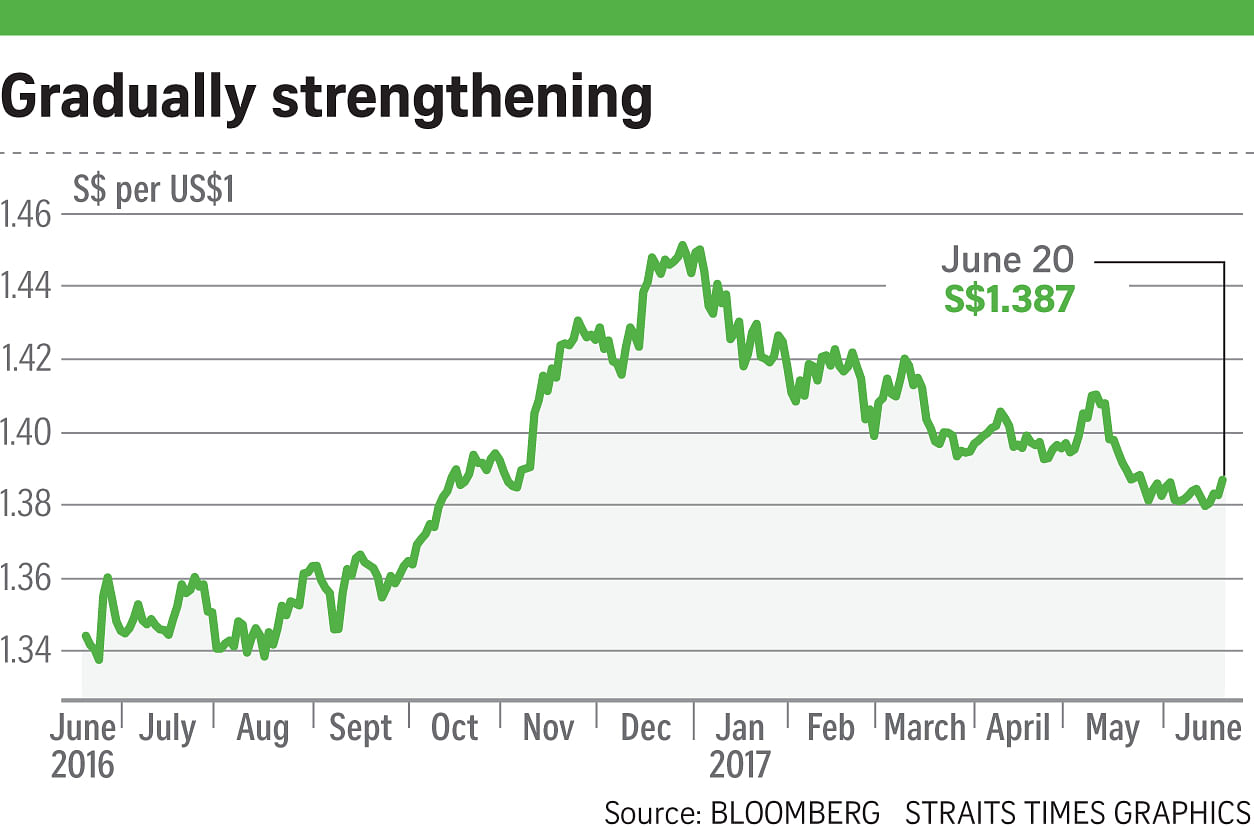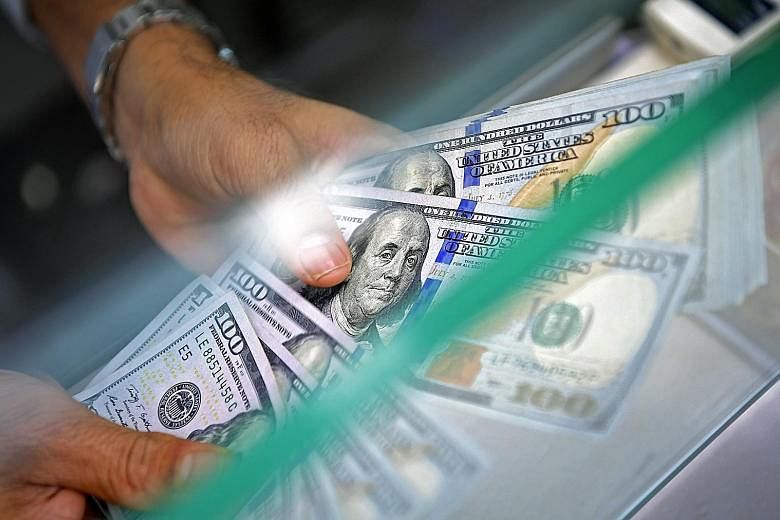Weaker-than-expected economic data and controversies surrounding the Trump administration have weighed on the greenback this year.
But analysts now expect a more stable outlook for the United States dollar against major Asian currencies in the second half of the year.
In recent days, the greenback has regained a bit of the ground it had lost against Asian currencies, including the Singdollar, since the start of the year, amid optimism over a seemingly stronger US economic outlook.
This comes after the US Federal Reserve raised its benchmark interest rate for the second time in three months last week, in a sign of the central bank's confidence in the stability of the US economy.
The Fed has now raised rates four times since December 2015, after keeping rates at ultra-low levels for years in response to the 2008 global financial crisis. Market watchers are expecting one more rate hike this year.
The greenback has inched up about 0.5 per cent against the Singapore dollar in the wake of the Fed's rate hike announcement. One US dollar can now buy S$1.387.

But this comes after the US currency has already weakened about 4.4 per cent against the Singapore dollar since January when it hit S$1.4505 - its highest level so far this year.
It is a similar story with other major regional currencies.
The US dollar rallied to a three- week high against the Japanese yen after Mr William Dudley, president and chief executive of the Federal Reserve Bank of New York, said on Monday that US inflation should rise alongside wages, supporting expectations for interest rates to continue rising.
One US dollar could buy about 111.6 yen as at 6pm yesterday, up from about 110 yen around the time of the Fed's rate hike announcement last week. The US dollar has slid about 5.6 per cent against the yen since January.
The greenback has also depreciated against other major global currencies this year, including the euro and British pound.
Phillip Futures investment analyst Woon Tian Yong noted:"These moves are in contrast with a commonly held belief that the US dollar had a very strong case for appreciation against the backdrop of rising interest rates and also US President Donald Trump's fiscally easy policies." Still, Mr Woon believes the greenback's weakness is bottoming out and the currency is likely to stabilise as the year comes to a close.
There is also potential for the US dollar to strengthen further, he added. "It seems like MrTrump has come full circle and landed back at square one with no tangible and significant headway made on his business-friendly promises so far.
"This may not be a bad thing, as positive and material developments from Mr Trump's three- pronged initiative of tax cuts, infrastructure spending and deregulation may once again be the reason for the US dollar to shine."
On the back of the recent pickup in the US dollar, DBS senior currency strategist Philip Wee said markets will be watching for further signals that the US economy is indeed strengthening. "We remain mindful that in the past three years, the US dollar did make a comeback in the second half of each year after a difficult first half," he added.
The DBS forecast is for the greenback to inch upwards against the Singdollar to reach S$1.40 in the first quarter of next year.


